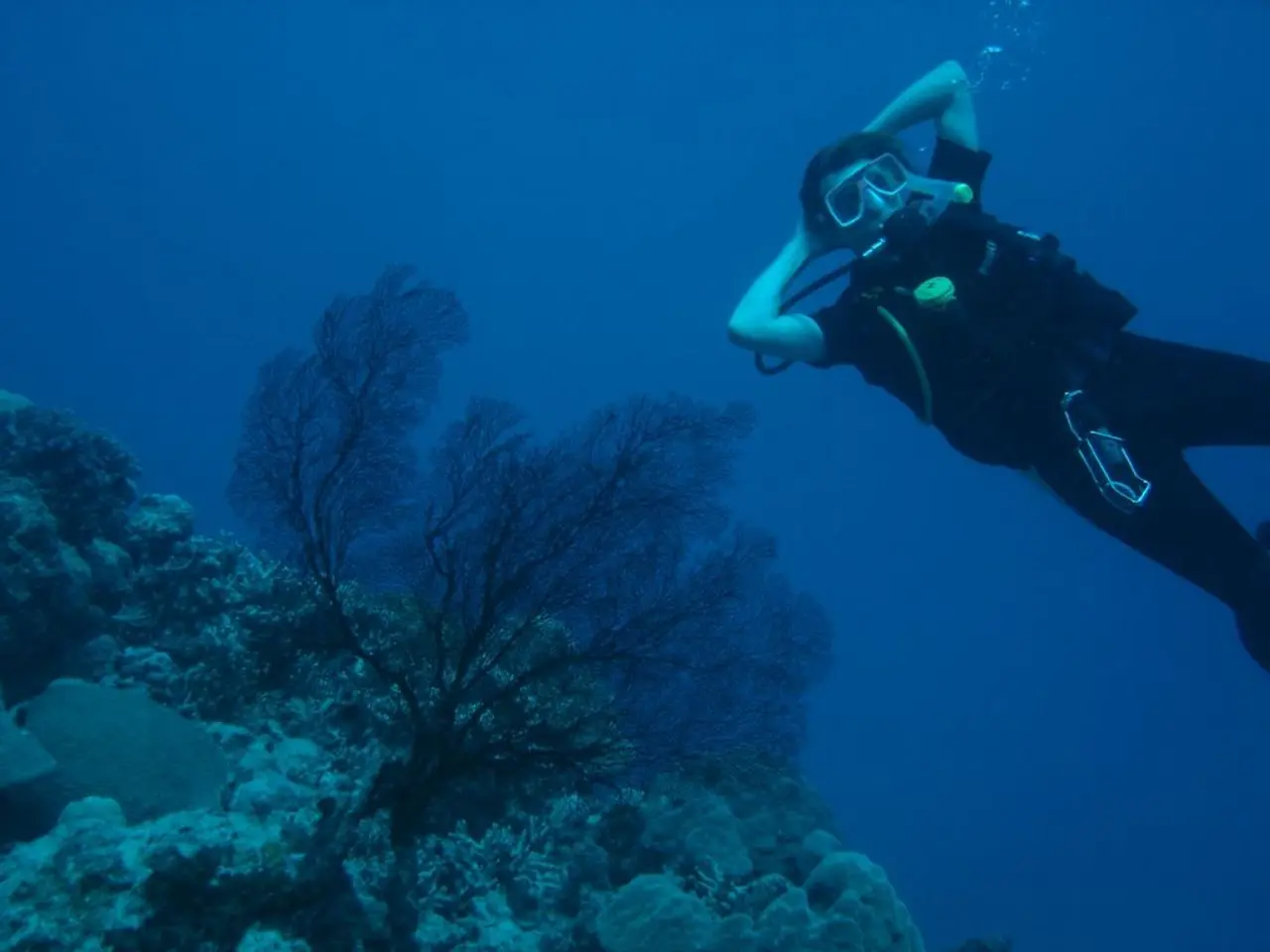Daring feats over precipices: the popularity of cliff jumping on social platforms, yet its inherent dangers frequently overlooked
In the thrilling world of cliff jumping, safety is paramount. Professional high diver and Instagram sensation Jeremy Nicollin, with over 655,000 followers, is no stranger to this adrenaline-pumping sport. After dedicating ten years to athletics and living off his sport since 2021, Nicollin is now preparing for a record-breaking 60m jump.
Nicollin advises gradual progress when adding new tricks to cliff jumping, first practicing them technically on land and at low heights. Measuring the height of the cliff before jumping is a priority for him to ensure it's within one's capabilities. Careful scouting is essential, including checking the water depth and studying the landing zone.
A successful arrival in the water requires the jumper to be as streamlined and perpendicular as possible, according to Louis Barzu, who secures Nicollin's jumps. Peer pressure can lead to poor landings and injuries, Nicollin warns, emphasizing the importance of being aware of one's abilities and imitating with consciousness.
Professionals in the field minimize risks by carefully following safety routines and procedures. Mental and physical preparation, environmental assessment, use of safety gear and measures, listening to coaches and following instructions, and site-specific awareness are all key practiced precautions.
Young cliff jumpers like Fabio Arnold, with over a million Instagram followers, have also experienced the dangers of the sport. Arnold spoke about the risks after an accident in April 2025 that resulted in multiple leg fractures.
Unfortunately, no figures record the number of accidents each year in cliff jumping. However, Sébastien Canu, an emergency physician, estimates one serious accident per week during the summer, caused by cliff jumping, ranging from a fracture to intensive care.
Cliff jumping is not regulated by any federation, organization, or the Ministry of Sports, Youth, and Associative Life. The main risk in cliff jumping is fainting following impact, explains Aldo Chaloine, a federal monitor of diving and apnea. In case of a violent impact and fainting, the risk is that the victim sinks quickly due to water pressure on the ribcage, causing air to escape and the body to sink.
Nicollin, who is looking for a French spot to achieve his record-breaking jump, wants to promote safety rules for cliff jumping. He emphasizes the importance of having a "safety" or a person to intervene if something goes wrong during a cliff jump.
Staying safe in cliff jumping requires mental readiness, environmental scrutiny, proper equipment use, emergency preparedness, and adherence to expert guidance. These efforts aim to minimize the inherent dangers of jumping from great heights into natural water bodies.





